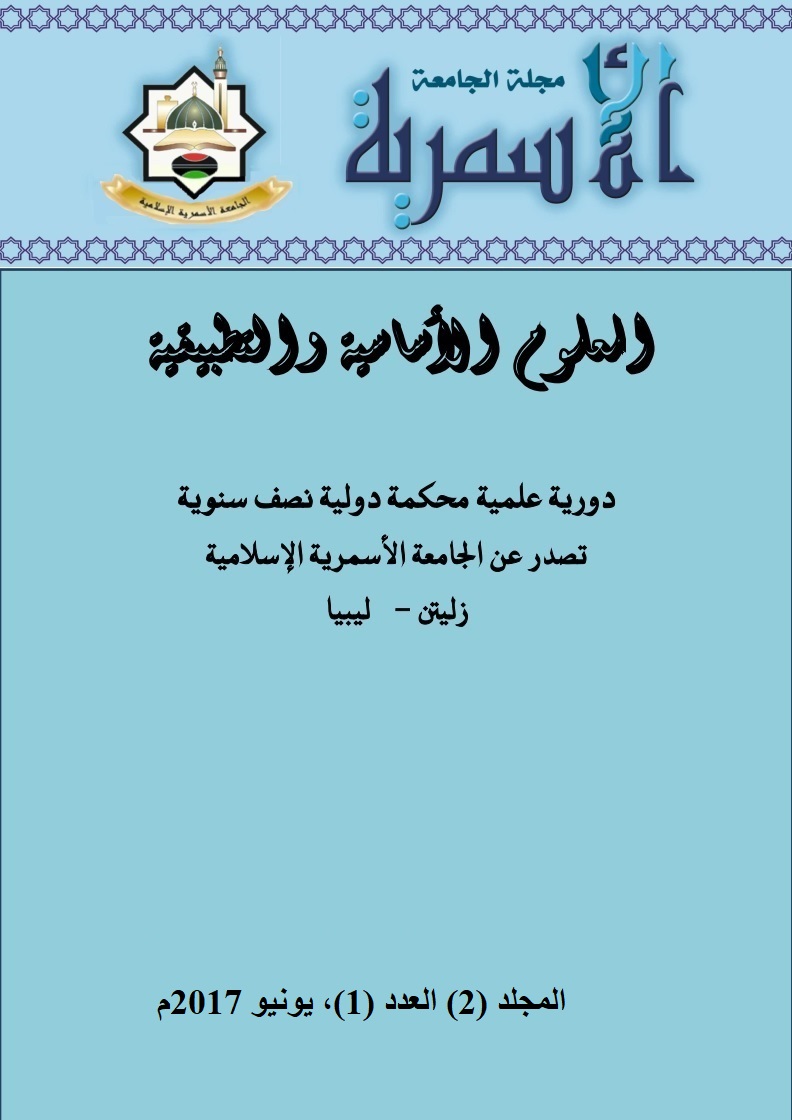CO2 miscible flooding for Aswad Oil Field
DOI:
https://doi.org/10.59743/aujas.v2i1.1087الكلمات المفتاحية:
EOR، CO2، MMP، Oil recovery، WAG ratio Production performanceالملخص
The current renewed interest on research and development of EOR processes and their oilfield implementation would allow targeting significant volumes of oil accumulations that have been left behind in mature reservoirs after primary and secondary oil recovery operations.
During the life of a producing oil field, several production stages are encountered. Initially, when a field is brought into production, oil flows naturally to the surface due to existing reservoir pressure in the primary phase. As reservoir pressure drops, water is typically injected to boost the pressure to displace the oil in the secondary phase. Lastly, the remaining oil can be recovered by a variety of means such as CO2 injection, natural gas miscible injection, and steam recovery in the final tertiary or enhanced oil recovery (EOR) phase.
The main parameter for determination of the possibilities to enhance oil recovery by e.g. CO2 injection into a specific oil field is the measurement of Minimum Miscibility Pressure (MMP). This pressure is the lowest pressure for which a gas can obtain miscibility through a multi contact process with a given oil reservoir at the reservoir temperature. The oil formation to which the process is applied must be operated at or above the MMP. And we obtained by using PVTi software.
The objective of this paper is to check if the Aswad field is suited for the application of CO2 miscible flooding and to see how much the recovery factor will increase after applying this EOR technique and to obtain the best WAG ratio and injection rate.
المراجع
Ahmed T. & McKinney P. (Advanced Reservoir Engineering). Burlington, MA: Elsevier, 2005.
JacekBlicharski, CzesławRybicki (Storage Capacity of Depleted Gas Reservoirs for Carbon Dioxide Sequestration – Material Balance Approach), .2010
Laura Romero-Zeron, (Advances in Enhanced Oil Recovery Processes) University of New Brunswick, Chemical Engineering Department Canada, .2012
R. Farajzadeh, B. Meulenbroek, D. Daniel A. Riaz, J. Bruining (An empirical theory for gravitationally unstable flow in porous media), 2012.
Taber J. J., Martin F. D. &Seright, R. S. (EOR Screening Criteria Revisited- Part 2: Applications and Impact of Oil Prices)." SPE Reservoir Engineering, 12- August 1997.
التنزيلات
منشور
كيفية الاقتباس
إصدار
القسم
الرخصة
الحقوق الفكرية (c) 2017 Abdualnaser almagrbi، Nouredeen Abdelsadeg، Ali A. Alhebshy، Ahmed Muftah، Moataz A. Almabrouk

هذا العمل مرخص بموجب Creative Commons Attribution 4.0 International License.
تتعلق الحقوق بنشر وتوزيع البحوث المنشورة في مجلة الجامعة الأسمرية، حيث توضح للمؤلفين الذين نشروا مقالاتهم في مجلة الجامعة الأسمرية، كيفية استخدام أو توزيع مقالاتهم، والاحتفاظ بجميع حقوقهم في المصنفات المنشورة، مثل (على سبيل المثال لا الحصر) الحقوق التالية:
- حقوق الطبع والنشر وحقوق الملكية الأخرى المتعلقة بالمقال المقدم، مثل حقوق براءات الاختراع.
- استخدام البحث المنشور في مجلة الجامعة الأسمرية في الأعمال المستقبلية الخاصة بالمؤلفين، بما في ذلك المحاضرات والكتب، والحق في إعادة إنتاج المقالات لأغراضهم الخاصة، والحق في الأرشفة الذاتية لمقالاتهم.
- الحق في الدخول في مقال منفصل، أو للتوزيع غير الحصري لمقالاتهم مع الإقرار بنشره الأولي في مجلة الجامعة الأسمرية.
الحقوق الفكرية: وفق الرخصة الدولية للأعمال الإبداعية المشاعة، النسخة 4.0.
بيان الخصوصية: سيتم استخدام الأسماء وعناوين البريد الإلكتروني التي تم إدخالها في موقع مجلة الجامعة الأسمرية للأغراض المذكورة فقط والتي استخدمت من أجلها.










